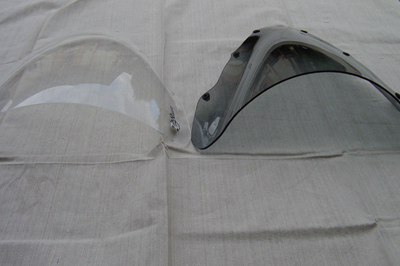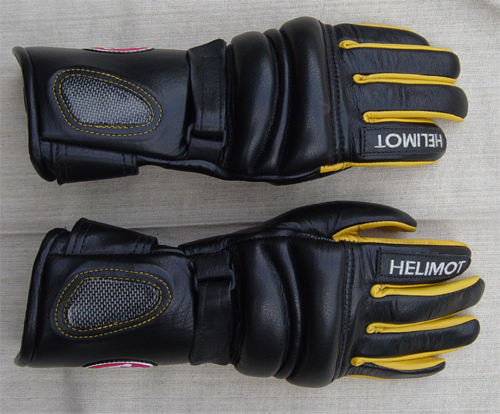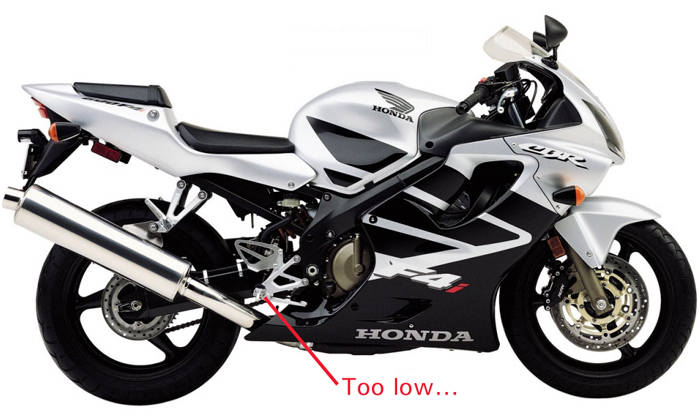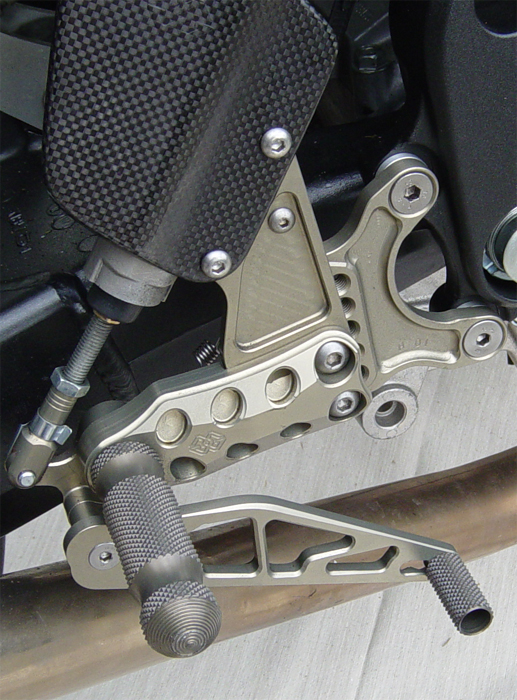| Quality: | + | + | + | + | - | (4 out of 5) |
| Functionality: | + | + | + | + | - | (4 out of 5) |
| Appearance: | + | + | + | - | - | (3 out of 5) |
| Value: | + | + | + | + | - | (4 out of 5) |
| Overall: | + | + | + | + | - | (4 out of 5) |
 Pros: Pros: |
| |||||
 Cons: Cons: |
| |||||
Buy ProGrip grips at Amazon.com.
Introduction
Still wanting more from my previous attempt to find decent aftermarket grips, I decided to give ProGrip a try.
Appearance-wise, ProGrips are probably the antithesis of the Renthals. At the time of this writing, ProGrip has over 50 distinct styles utilizing single-, double- or even triple-rubber compounds in seven different categories (covering everything from jet skis to scooters). Due to the huge selection, and since I was ordering these online, this review is as much about my online shopping experience as it is about the grips themselves.
I started at the ProGrip website, which is a pretty daunting place. I had no idea their product offering was so vast. The website has multiple menus, sub-menus and sub-sub-menus, but, since I knew exactly what I was looking for, it was only moderately difficult to navigate to the motorbike grips section.1
To keep things simple, I limited myself to their "SUPER BK" section. Ultimately, I decided on the 717s partially because the grip pattern was similar to the Renthals (and I liked how those performed in that area) and also that they were among those most likely to fit my 2005 YZF-R6. The fact that they were the least obnoxious didn't hurt (I ordered the subtle black-gray color scheme).
Impression
Right away, I noticed a difference between the quality and substance of the ProGrips compared to the Renthals. They were definitely thicker and somewhat more supple. The black-gray theme was not nearly as offensive as I thought it would be based on the website pictures.
Installation
Since I had already removed my stock grips when I installed the Renthals (and since I didn't use grip glue), installation was a non-event. After I removed the safety wire, the Renthals slipped right off with a little compressed air and the 717s went right on with a little isopropyl. I applied new safety wire, waited a few hours for the isopropyl to evaporate, and I was good to go.2
Use
I have to say that, after my first hour-long ride with the ProGrips, I was very pleased. While the grips did transfer some vibration, it wasn't debilitating. Furthermore, they seemed just as grippy as the Renthals—which was the Renthals' one redeeming factor.
The true test was still to come. An hour-long road ride might be comparable to 20 minutes on the track, much less an entire day there. Seeing if the ProGrips provided continued comfort under more extreme riding conditions was the perfect excuse for a track test!
After giving them a spin at Thunderhill, I can honestly say that they did a job damping vibrations while providing comfortable grip, good throttle control, and just the right amount of front-end feedback. I didn't do a back-to-back comparison with the Renthals and my stock grips (which would have been the best method for comparison), but at this point, I almost don't feel it's necessary since this is the first time I've been clearly content with my grips.
Conclusion
I should acknowledge that evaluating motorcycle grips is highly subjective and rider personalities vary significantly. I've known motorcrossers-turned-roadracers who insist on using off-road grips on their race bikes. That's probably why it makes sense for ProGrip to offer as many styles as it does.
That being said, I think I'm finally happy with my own grip situation. Also, since I ride on the road as well as the track, reducing vibration while maintaining feel is important to me, but a competent racer using them exclusively for the track might have different demands (more feedback, lower cost of replacement, etc.). What I can tell you is that the ProGrips cost was pretty similar to that of the Renthals, but because they performed so much better for me, I feel like I got more bang for my buck. I would definitely recommend giving them a try.
1. I have to take this opportunity to express my dissatisfaction the ProGrip website. It relied too heavily on JavaScript and, personally, I hate it when JavaScript/Flash is a necessary part of navigation. One of the most detrimental side-effects of this approach is that I, as a consumer, can't copy the URL from my browser and e-mail it to bigpuss for a second opinion.
With website design, as a general rule, keep it simple. An elegant solution won't make a consumer think too much. Read Don't Make Me Think: A Common Sense Approach to Web Usability, and remember (as Mr. T would say) KISS: Keep It Simple Sucka.
2. bigpuss actually has perfected an approach using only compressed air to pull grips off and slide them on. Mastery of this approach allows almost immediate gratification since there is no isopropyl that must evaporate. I encourage you to experiment and find your own best method.




















